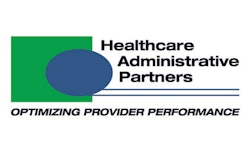
Just as you were done revising your practice systems and processes to support meaningful use and the Medicare Access and CHIP Reauthorization Act of 2015 (MACRA)/Merit-Based Incentive Payment System (MIPS), a new Medicare mandate came along.
One of the biggest challenges for radiology practices right now is to be able to comply with the requirement that ordering physicians use a clinical decision support mechanism (CDSM) to consult appropriate use criteria (AUC) when ordering MR, CT, PET, and other specified nuclear medicine exams. This rule has been on the books since 2014, but it will begin to be implemented in 2020 followed by the imposition of penalties in 2021.
 Sandy Coffta from Healthcare Administrative Partners.
Sandy Coffta from Healthcare Administrative Partners.This is not a voluntary bonus like meaningful use or the avoidance of a small fee reduction under MIPS. Rather, it means there will be no payment to the radiologist for procedures performed without using the appropriate process.
None of this should come as news. Hopefully your practice has been working toward identifying and implementing the systems necessary for compliance in both the hospital and the imaging center or private practice.
Educating the ordering physicians is a key component, since many of them will not be as aware of this rule as radiologists are. The ordering physician is not penalized for failure to use the system! Only the radiologist is denied payment, so it is the job of the radiology groups (often in concert with their hospital) to educate, train, and assist ordering physicians in the use of the systems selected.
Radiology business managers report that their current focus is to get hospitals and their employed physicians (including emergency department physicians) familiar and comfortable with the use of the decision support ordering systems.
To help facilitate this process for radiology groups, the American College of Radiology (ACR) recently released its AUC Toolkit, which can be used to explain the mandate to referring providers. It contains links to some articles that explain the background and history of appropriate use criteria, something the ACR has long been promoting, as well as a link to the Medicare Learning Network fact sheet and a customizable letter in Word format that can be sent to referring providers.
In addition, the ACR's Clinical Decision Support webpage contains a nice compendium of information and ideas for practices to use as they begin to identify the systems and processes they will implement.
While sending a letter and other information to your referring physician offices is a good idea, a personal visit to deliver information specific to your practice will go a long way toward acceptance of clinical decision support. By making specific recommendations, your practice will be more certain that the systems used by the ordering offices will comply and integrate with your own medical records or radiology information system (RIS) so that the appropriate data are captured for submission to Medicare. This will assure that you continue to be reimbursed for these services.
Since Medicare has opened a voluntary reporting period through the end of this year, it would be a good idea to have ordering physicians begin to use the systems immediately as you roll out your educational program rather than waiting until 2020.
We cannot over-emphasize the importance of working together with your hospital or health system to get the word out about clinical decision support to the ordering physician community.
Sandy Coffta is vice president of client services at Healthcare Administrative Partners.
The comments and observations expressed are those of the author and do not necessarily reflect the opinions of AuntMinnie.com.



















